Mad for Mod: Bring Mid-Century Cool Home
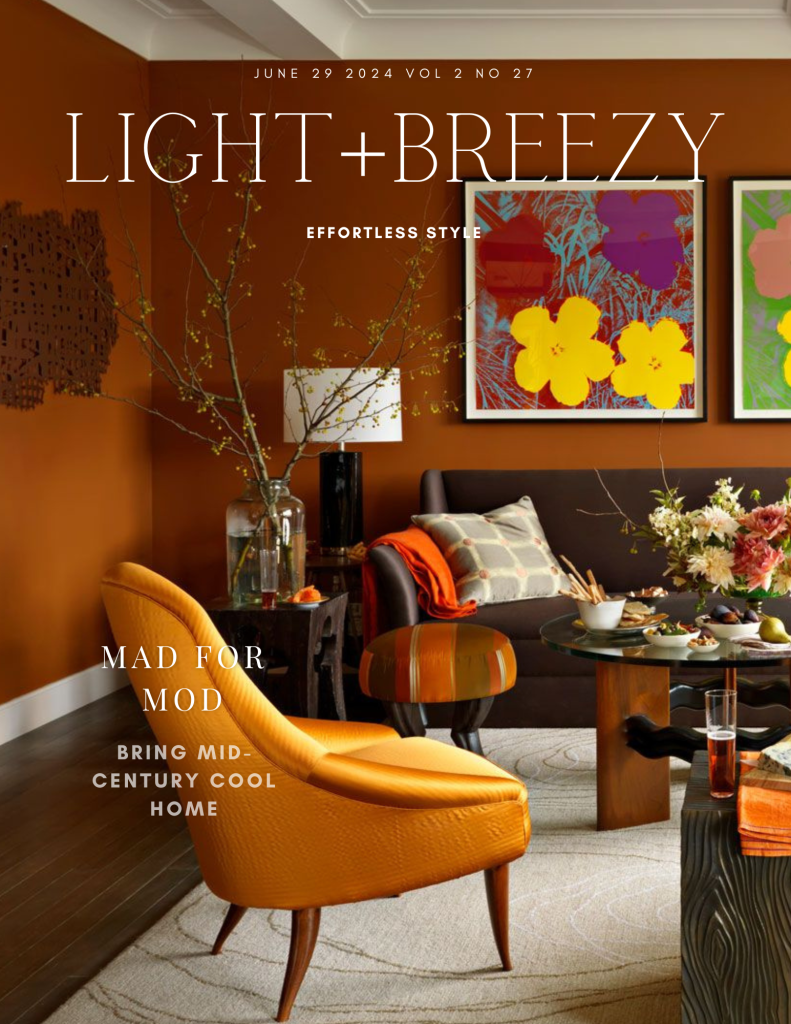
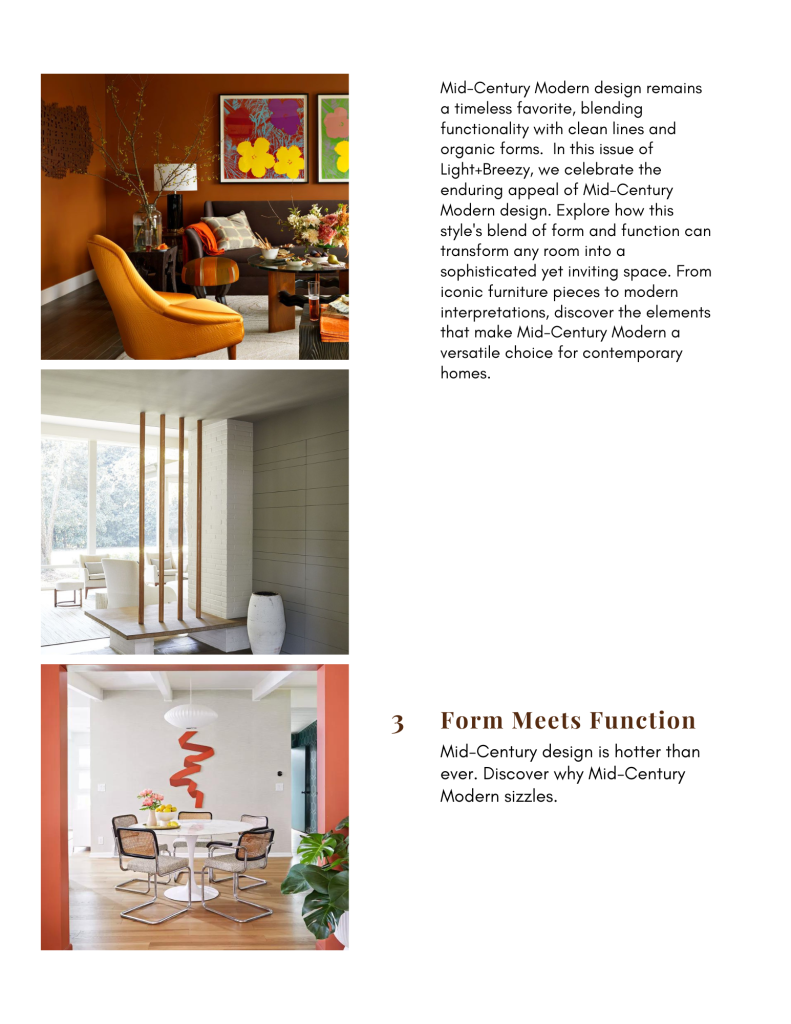
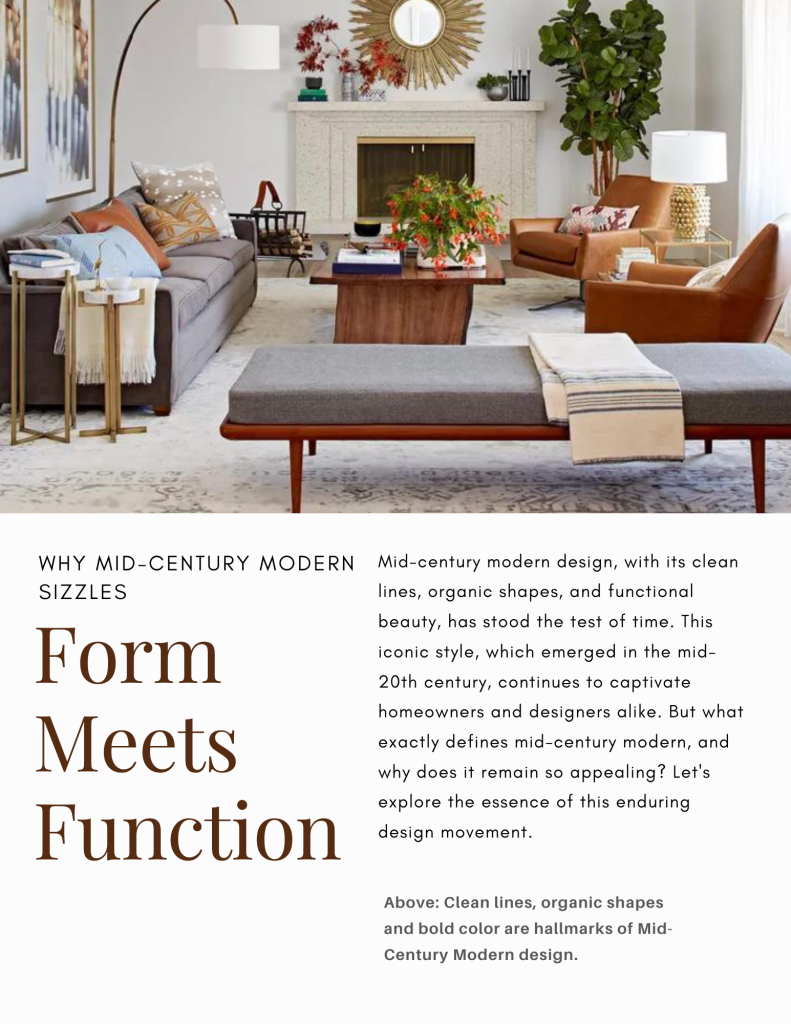

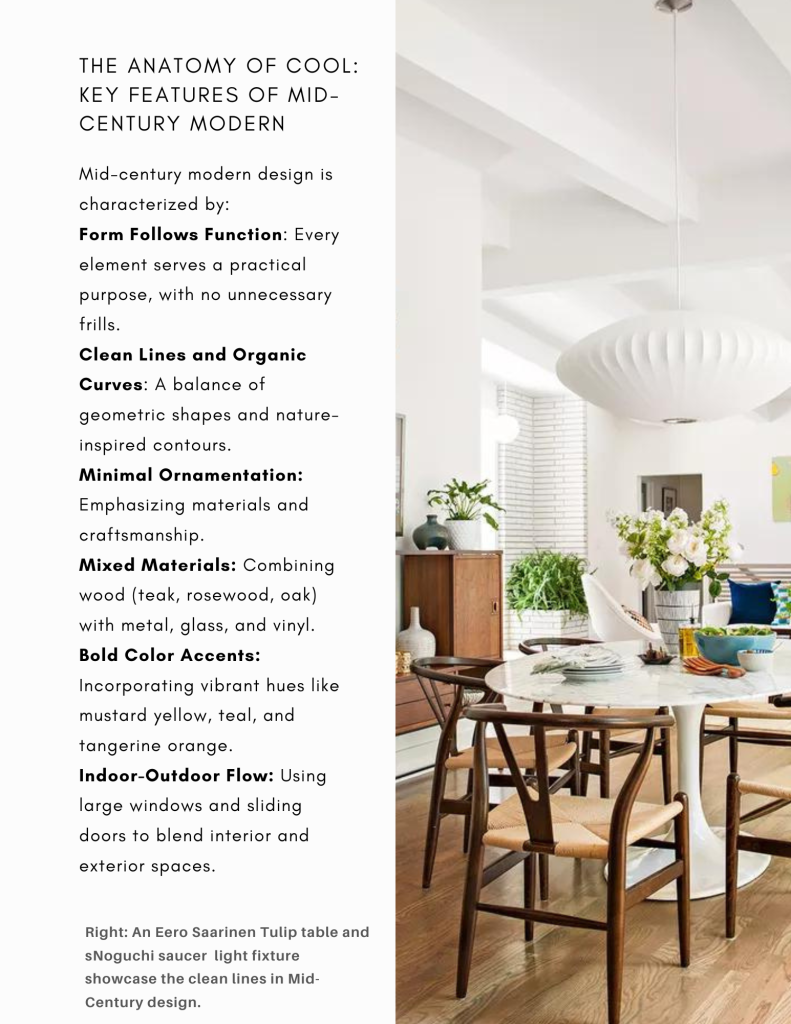
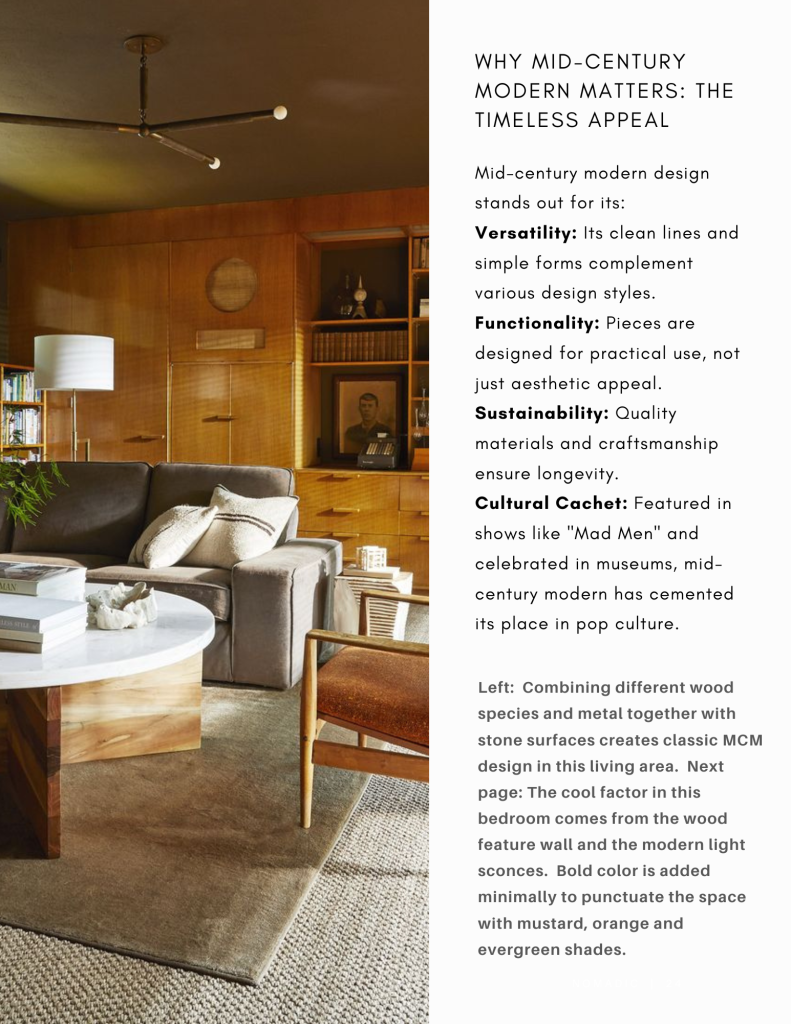
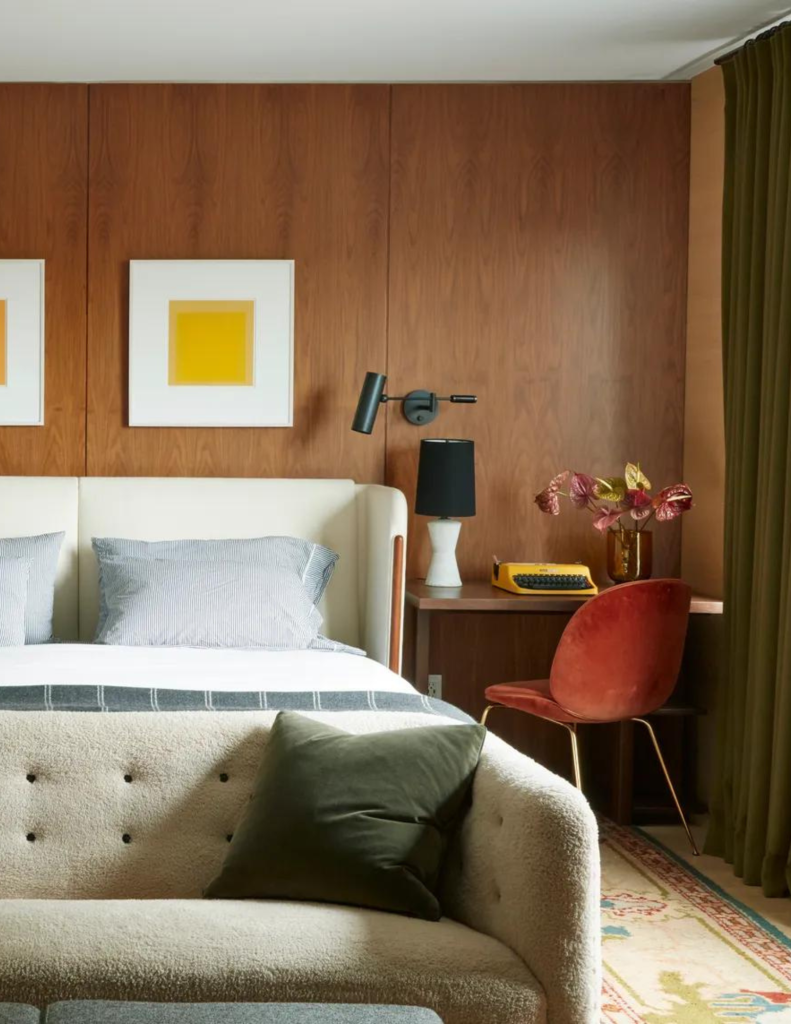
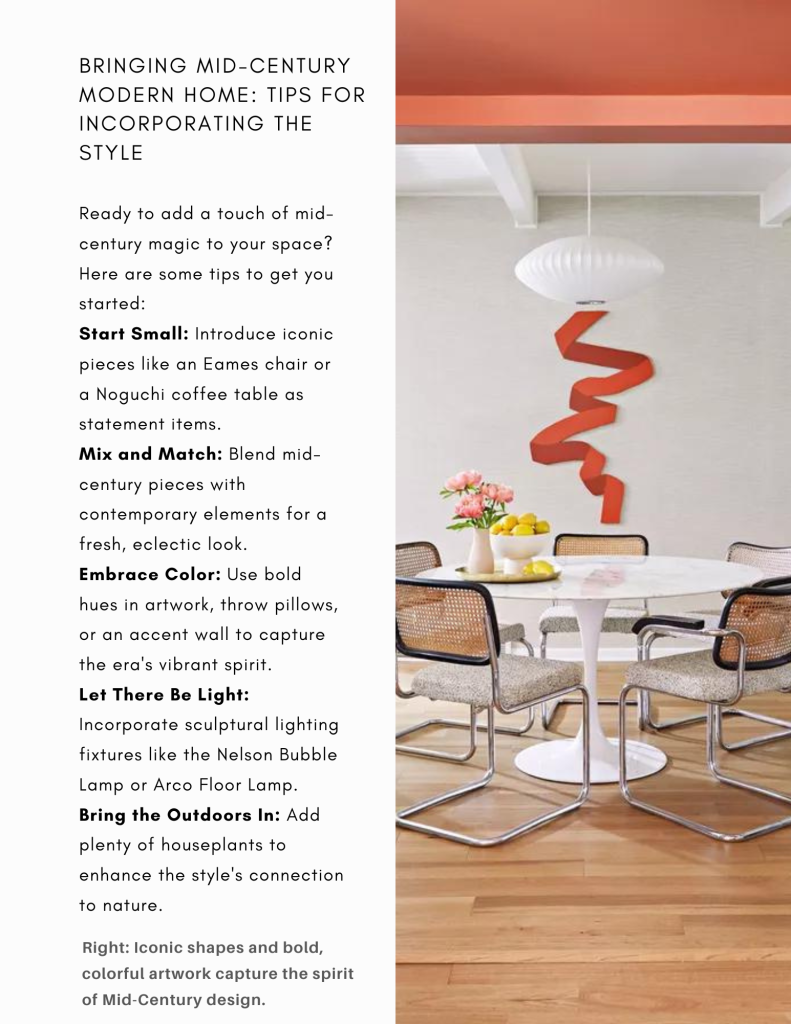

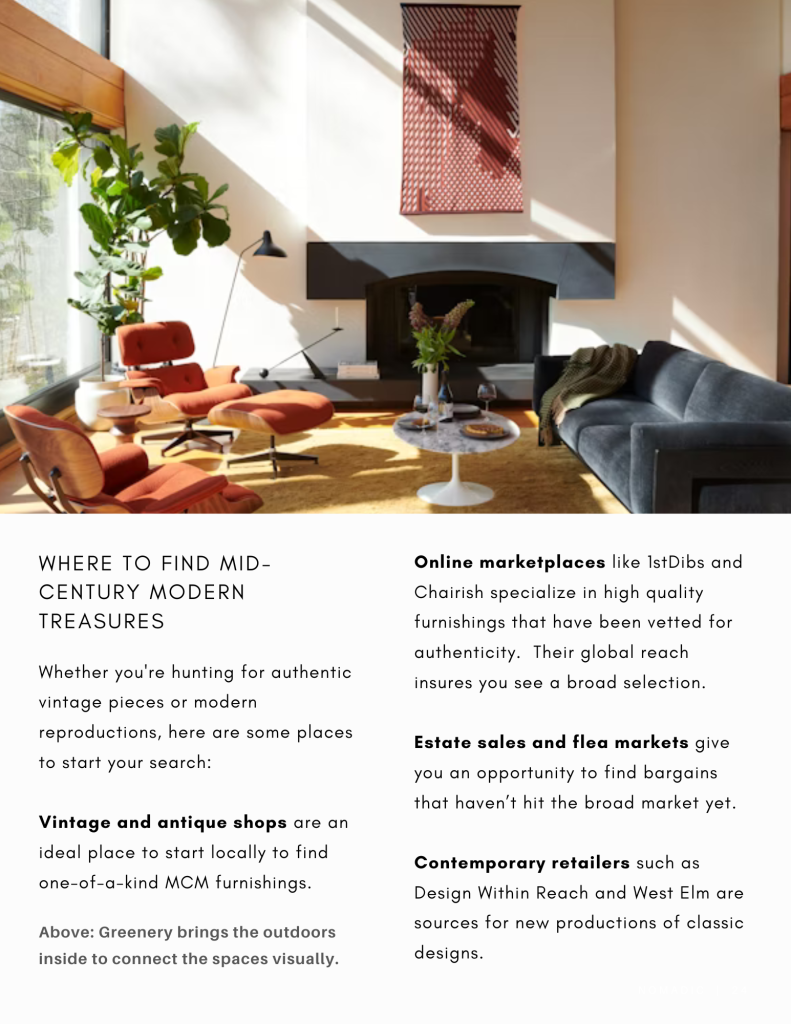
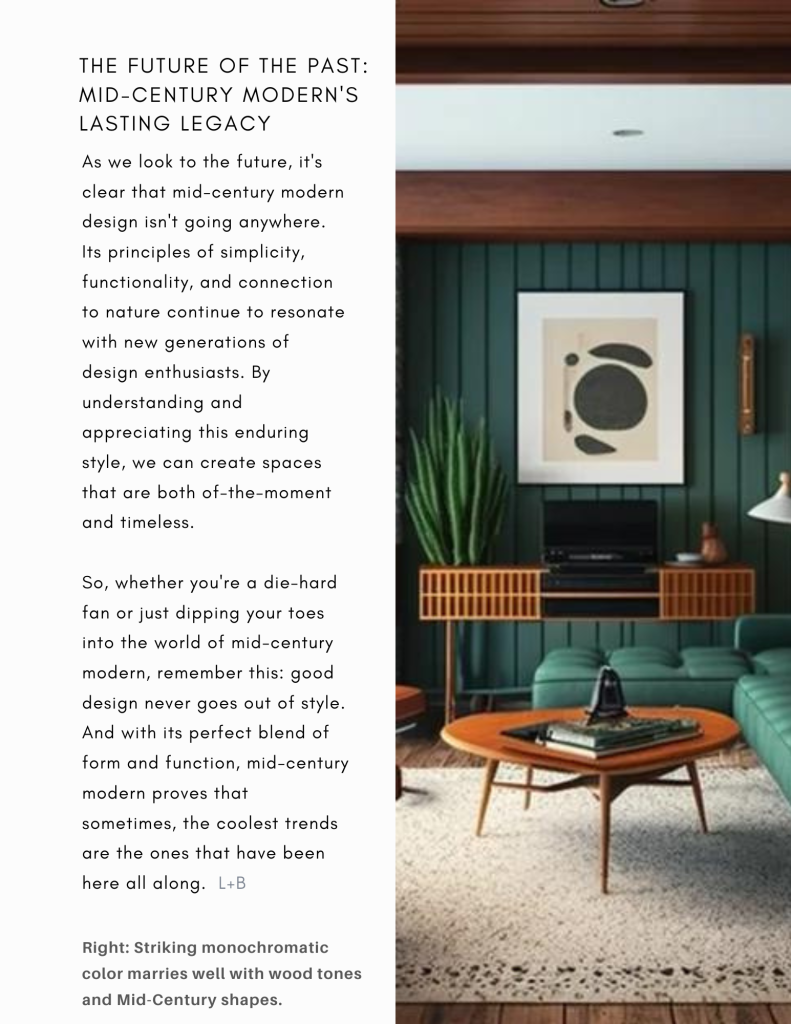
Complete Article Text:
Form Meets Function
Why Mid-Century Modern Sizzles
Mid-century modern design, with its clean lines, organic shapes, and functional beauty, has stood the test of time. This iconic style, which emerged in the mid-20th century, continues to captivate homeowners and designers alike.
But what exactly defines mid-century modern, and why does it remain so appealing? Let’s explore the essence of this enduring design movement.
The Birth of Cool: When and Why Mid-Century Modern Emerged
In the mid-1940s, as the world recovered from World War II, a wave of optimism and innovation swept across America. Economic growth and technological advancements fueled a desire for new, forward-thinking designs.
Mid-century modern emerged during this era, from the late 1940s to the late 1960s, influenced by the Bauhaus movement and Scandinavian design principles. This style championed simplicity, functionality, and a connection to nature, moving away from the ornate traditions of the past.
The Anatomy of Cool: Key Features of Mid-Century Modern
Mid-century modern design is characterized by:
Form Follows Function: Every element serves a practical purpose, with no unnecessary frills.
Clean Lines and Organic Curves: A balance of geometric shapes and nature-inspired contours.
Minimal Ornamentation: Emphasizing materials and craftsmanship.
Mixed Materials: Combining wood (teak, rosewood, oak) with metal, glass, and vinyl.
Bold Color Accents: Incorporating vibrant hues like mustard yellow, teal, and tangerine orange.
Indoor-Outdoor Flow: Using large windows and sliding doors to blend interior and exterior spaces.
Why Mid-Century Modern Matters: The Timeless Appeal
Mid-century modern design stands out for its:
Versatility: Its clean lines and simple forms complement various design styles.
Functionality: Pieces are designed for practical use, not just aesthetic appeal.
Sustainability: Quality materials and craftsmanship ensure longevity.
Cultural Cachet: Featured in shows like “Mad Men” and celebrated in museums, mid-century modern has cemented its place in pop culture.
Bringing Mid-Century Modern Home: Tips for Incorporating the Style
Ready to add a touch of mid-century magic to your space? Here are some tips to get you started:
Start Small: Introduce iconic pieces like an Eames chair or a Noguchi coffee table as statement items.
Mix and Match: Blend mid-century pieces with contemporary elements for a fresh, eclectic look.
Embrace Color: Use bold hues in artwork, throw pillows, or an accent wall to capture the era’s vibrant spirit.
Let There Be Light: Incorporate sculptural lighting fixtures like the Nelson Bubble Lamp or Arco Floor Lamp.
Bring the Outdoors In: Add plenty of houseplants to enhance the style’s connection to nature.
The Masters Behind the Movement: Designers You Should Know
Mid-century modern wouldn’t be what it is without the visionary designers who shaped it. Here are a few names to remember:
Charles and Ray Eames: The power couple behind the iconic Eames Lounge Chair and many other timeless designs.
Eero Saarinen: Creator of the Tulip Chair and Table, known for their organic, flowing forms.
George Nelson: The mind behind the Marshmallow Sofa and the Nelson Bubble Lamp series.
Isamu Noguchi: Sculptor and designer famous for his biomorphic coffee table and Akari light sculptures.
Where to Find Mid-Century Modern Treasures
Whether you’re hunting for authentic vintage pieces or modern reproductions, here are some places to start your search:
Vintage and antique shops are an ideal place to start locally to find one-of-a-kind MCM furnishings.
Online marketplaces like 1stDibs and Chairish specialize in high quality furnishings that have been vetted for authenticity. Their global reach insures you see a broad selection.
Estate sales and flea markets give you an opportunity to find bargains that haven’t hit the broad market yet.
Contemporary retailers such as Design Within Reach and West Elm are sources for new productions of classic designs.
The Future of the Past: Mid-Century Modern’s Lasting Legacy
As we look to the future, it’s clear that mid-century modern design isn’t going anywhere. Its principles of simplicity, functionality, and connection to nature continue to resonate with new generations of design enthusiasts.
By understanding and appreciating this enduring style, we can create spaces that are both of-the-moment and timeless.
So, whether you’re a die-hard fan or just dipping your toes into the world of mid-century modern, remember this: good design never goes out of style. And with its perfect blend of form and function, mid-century modern proves that sometimes, the coolest trends are the ones that have been here all along.
